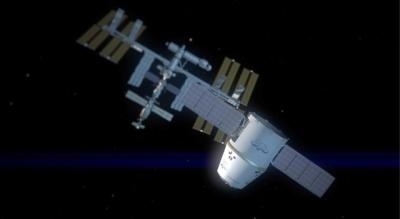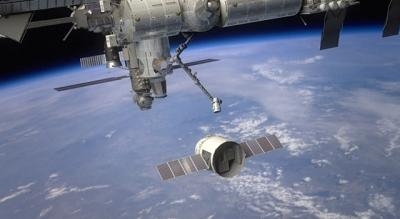Dragon To Make Near Approach, Possibly Rendezvous With ISS
December 8 2011, marked the one year anniversary of
Dragon’s first Commercial Orbital Transportation Services
(COTS) demonstration flight. The flight made history as SpaceX
became the only commercial company to successfully return a
spacecraft from orbit. This feat had previously been accomplished
only by five nations and the European Space Agency. The company is
now preparing the Dragon spacecraft for yet another historic
flight – becoming the first commercial vehicle in history to
visit the ISS.

NASA recently announced February 7, 2012, as the new target
launch date for the upcoming mission. In addition, NASA officially
confirmed that SpaceX will be allowed to complete the objectives of
COTS 2 and COTS 3 in a single mission. This means Dragon will
perform all of the COTS 2 mission objectives which include numerous
operations in the vicinity of the ISS, and will then perform the
COTS 3 objectives. These include approach, berthing with the ISS,
astronauts opening Dragon and unloading cargo, and finally,
astronauts closing the spacecraft and sending it back to Earth for
recovery from the Pacific Ocean off the coast of California.
This mission marks a major milestone in American spaceflight.
While the first missions to the ISS will be to transport cargo,
both Falcon 9 and Dragon were designed to ultimately transport
astronauts. SpaceX says every trip to the ISS from this point
forward is a step closer to that goal.
Just as Dragon’s first mission to orbit and back involved
a level of effort equal to launching the first Falcon 9, preparing
Dragon for two weeks of operation in space and for approach and
berthing with the ISS poses new challenges. Meeting them requires a
large amount of detailed planning and careful execution.
Each launch day will have just one narrow liftoff window—no
more than a few minutes—in order to synchronize
Dragon’s flight with the orbit of the ISS. Catching up to the
ISS will take from one to three days. Once there, Dragon will begin
the COTS 2 demonstrations to show proper performance and control in
the vicinity of the ISS, while remaining outside the
Station’s safe zone.

During the entire time Dragon is in the vicinity of the ISS,
Station astronauts will be in direct communication with Dragon and
will be able to monitor the spacecraft as well as issue spacecraft
commands. After successfully completing the COTS 2 requirements,
Dragon will receive approval to begin the COTS 3 activities,
gradually approaching the ISS from the radial direction (toward the
Earth), while under constant observation. Dragon will approach to
within a few meters of the ISS, allowing astronauts to reach out
and grapple Dragon with the Station’s robotic arm and then
maneuver it carefully into place. The entire process will take a
few hours. Once in place, Station astronauts will equalize the
pressure between the ISS and Dragon, open the hatches, enter the
vehicle and begin unloading Dragon’s cargo.
After Dragon spends about a week berthed at the ISS, astronauts
will reverse the process, loading Dragon with cargo for return to
Earth, sealing the hatches, and un-berthing Dragon using the
robotic arm. Dragon will then depart from the ISS and return to
Earth within a day or so, and the SpaceX recovery crew will meet it
at splash down in the Pacific Ocean off the coast of California.
(Images provided by SpaceX)
 Classic Aero-TV: The Switchblade Flying Car FLIES!
Classic Aero-TV: The Switchblade Flying Car FLIES! ANN FAQ: Q&A 101
ANN FAQ: Q&A 101 ANN's Daily Aero-Term (04.12.24): Discrete Code
ANN's Daily Aero-Term (04.12.24): Discrete Code ANN's Daily Aero-Term (04.13.24): Beyond Visual Line Of Sight (BVLOS)
ANN's Daily Aero-Term (04.13.24): Beyond Visual Line Of Sight (BVLOS) ANN's Daily Aero-Linx (04.13.24)
ANN's Daily Aero-Linx (04.13.24)




